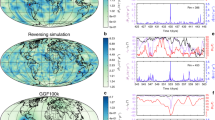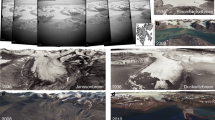Abstract
In scientific literature of to-day dealing with geophysical matters one frequently meets assertions that the hypothesis of isostasy is universally established. Prof. Heiskanen begins a recent article,1 “In recent years geodesists, geophysicists, and geologists have studied extensively isostatic compensation and it can be considered as a proved fact that isostatic compensation prevails, at least in North America (Hayford, Bowie), in India (Pratt, Airy, Burrard, Crosthwait), etc.”. I consider this statement far from true as regards India. Pratt and Airy, whose work is published in the Phil. Trans. Roy. Soc. (1854–59), had only three values of the meridian value of the deflection of the vertical on which to base their studies. Pratt suggested the idea of mountain compensation; but he did not completely satisfy the observational points. Burrard in 19012 did not agree with Pratt's conclusion; later on, however, in 1918,3 by extending the scope of Hayford's isostatic hypothesis to include compensation of density anomalies, he was able to satisfy the observational data then existent in the Himalaya and neighbouring regions by attributing appropriate depth to such anomalies. Crosthwait in 19124 wrote: “Speaking generally, it would appear that isostatic conditions are much more nearly realised in America than in India”. He had made the necessary calculations for the Hayford deflection at 102 latitude stations and 18 longitude stations distributed over India.
This is a preview of subscription content, access via your institution
Access options
Subscribe to this journal
Receive 51 print issues and online access
$199.00 per year
only $3.90 per issue
Buy this article
- Purchase on Springer Link
- Instant access to full article PDF
Prices may be subject to local taxes which are calculated during checkout
Similar content being viewed by others
References
"Isostasy and the Figure of the Earth" American Journal of Science, vol. 21, No. 121, January 1931.
Survey of India, Professional Paper, No. 5.
Survey of India, Professional Paper, No. 17.
Survey of India, Professional Paper, No. 13.
Details of all the work are given in Geodetic Reports, vol. 1, 1–5.
Author information
Authors and Affiliations
Rights and permissions
About this article
Cite this article
HUNTER, J. Isostasy. Nature 127, 593–594 (1931). https://doi.org/10.1038/127593b0
Issue Date:
DOI: https://doi.org/10.1038/127593b0
Comments
By submitting a comment you agree to abide by our Terms and Community Guidelines. If you find something abusive or that does not comply with our terms or guidelines please flag it as inappropriate.



